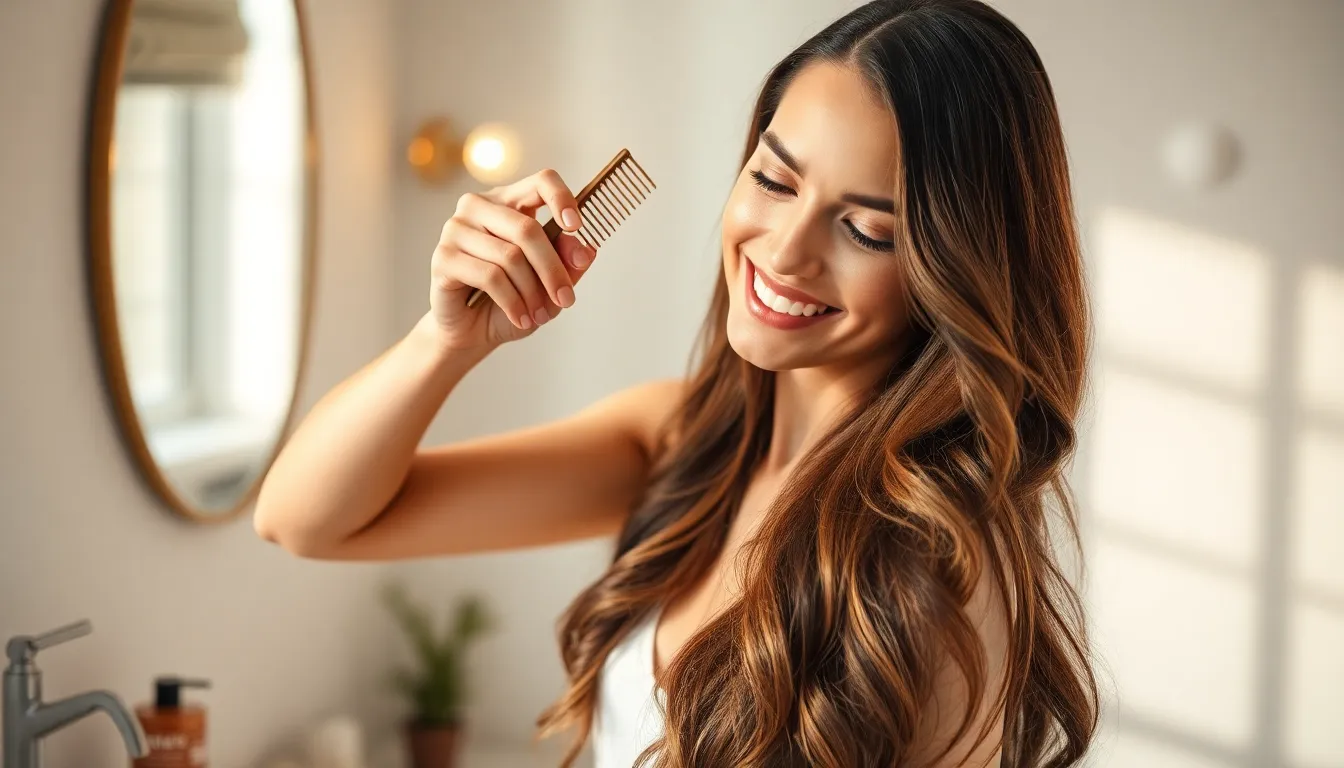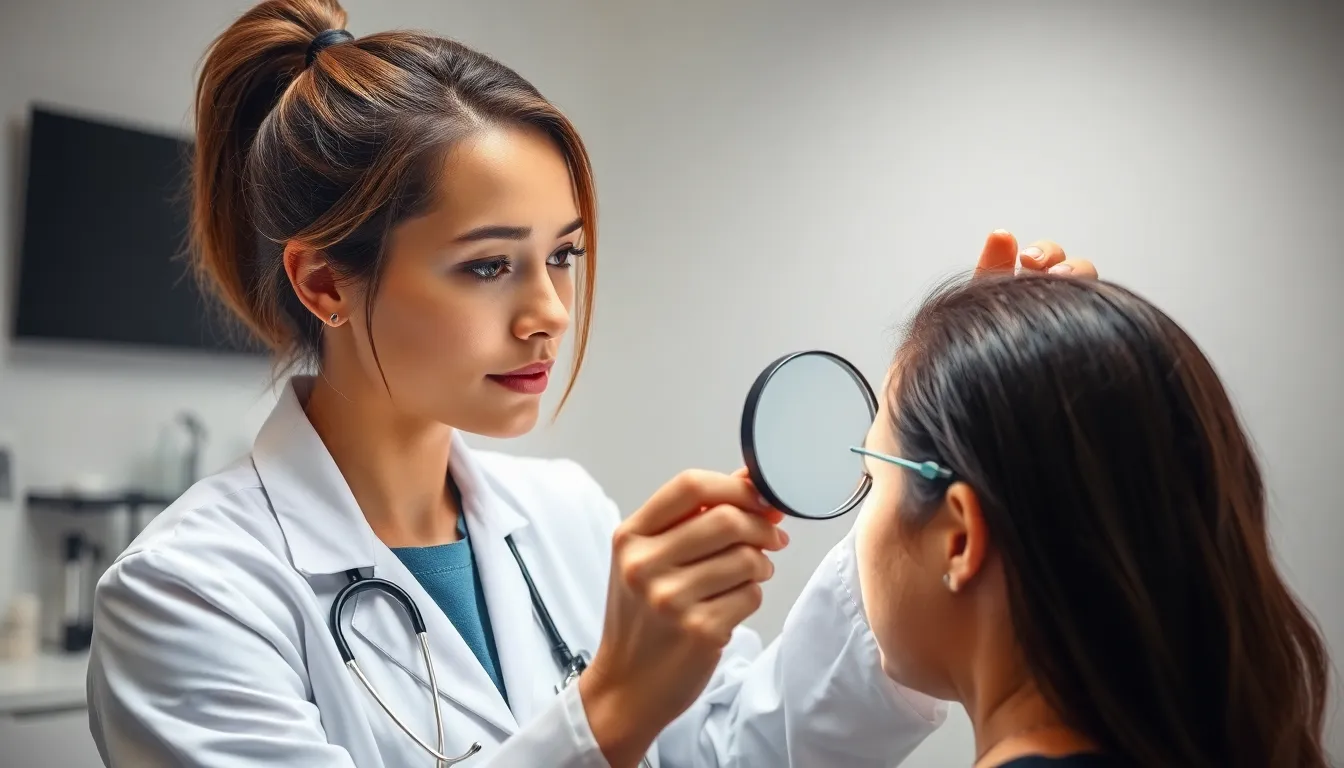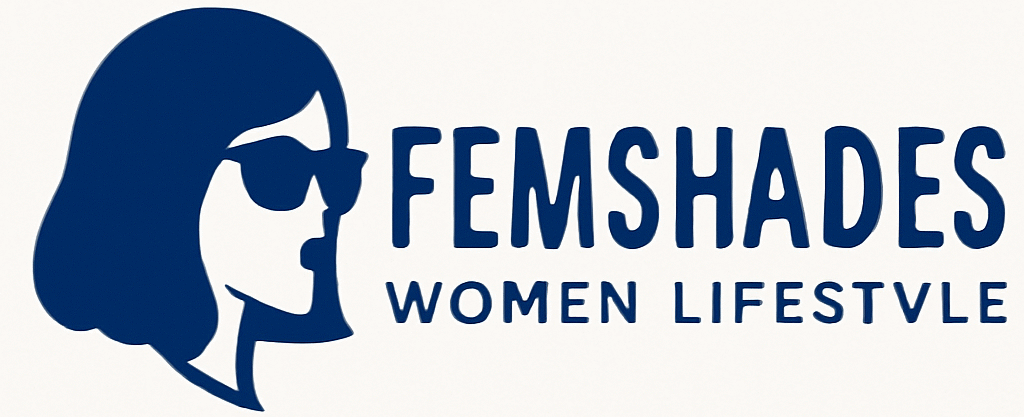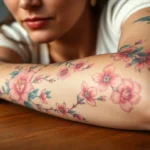We’ve all been there – watching strands of hair swirl down the drain or finding them scattered across our pillowcase. Hair fall affects millions of women worldwide and it’s more common than you might think. Whether it’s hormonal changes stress or environmental factors there are countless reasons why we experience hair loss.
The good news? We don’t have to accept thinning hair as inevitable. With the right approach and proven techniques we can significantly reduce hair fall and promote healthier stronger locks. From simple dietary adjustments to targeted hair care routines there are many strategies that actually work.
We’re about to share the most effective hair fall control tips that have helped countless women regain their confidence and achieve the thick lustrous hair they’ve always wanted. These aren’t just quick fixes – they’re sustainable answers that address the root causes of hair loss.
Understand the Root Causes of Hair Fall in Women
Before we jump into answers, it’s crucial to identify what’s actually causing your hair to fall out. Addressing these underlying issues gives us the best chance of achieving lasting results.
Hormonal Imbalances and Life Changes
Pregnancy and postpartum periods create important hormonal shifts that affect hair growth cycles. During pregnancy, elevated estrogen levels keep hair in the growth phase longer, making it appear thicker and fuller. After delivery, hormone levels drop dramatically, causing up to 50% of women to experience noticeable hair loss within 3-6 months.
Menopause brings another wave of hormonal changes that can trigger hair thinning. Declining estrogen and progesterone levels allow androgens like DHT to become more dominant, leading to pattern hair loss similar to male baldness. This typically affects the crown and frontal areas first.
Thyroid disorders impact nearly 20 million Americans, with women being 5-8 times more likely to develop thyroid problems. Both hyperthyroidism and hypothyroidism disrupt normal hair growth cycles, causing diffuse hair loss across the entire scalp.
PCOS affects 1 in 10 women of reproductive age and often leads to elevated androgen levels. These hormones can shrink hair follicles, resulting in progressively thinner hair over time.
Nutritional Deficiencies and Poor Diet
Iron deficiency remains the most common nutritional cause of hair loss in women. Studies show that even mild iron deficiency without anemia can trigger important hair shedding. Women need 18mg of iron daily, but many consume less than half this amount.
Protein deficiency impacts hair structure since hair is primarily made of keratin, a protein. Women should consume at least 46 grams of protein daily, but crash diets and restrictive eating patterns often fall short of this requirement.
Vitamin D deficiency affects over 40% of adults and plays a crucial role in hair follicle cycling. Research indicates that women with alopecia often have significantly lower vitamin D levels compared to those with healthy hair.
B vitamin deficiencies, particularly B12 and biotin, can cause hair to become brittle and break easily. Vegetarians and vegans are at higher risk for B12 deficiency since it’s primarily found in animal products.
Stress and Lifestyle Factors
Chronic stress elevates cortisol levels which can push hair follicles into the resting phase prematurely. This type of hair loss, called telogen effluvium, typically occurs 2-3 months after a stressful event and can last for several months.
Physical trauma from tight hairstyles creates constant tension on hair follicles, leading to traction alopecia. Ponytails, braids, and hair extensions worn frequently can cause permanent damage to the hairline and temples.
Heat styling tools used regularly at temperatures above 300°F can damage the hair cuticle and weaken the hair shaft. Daily use of flat irons, curling irons, and blow dryers contributes to breakage and thinning over time.
Chemical treatments like bleaching, perming, and frequent coloring strip the hair of its natural protective oils and proteins. These processes can cause immediate breakage and long term follicle damage if done repeatedly without proper care.
Nourish Your Hair From Within With Proper Nutrition

Addressing hair fall requires more than external treatments—we need to fuel our bodies with the right nutrients for optimal hair health. A balanced diet rich in vitamins and minerals supports healthy hair growth from the inside out.
Essential Vitamins for Hair Growth
Biotin plays a crucial role in strengthening hair follicles and promoting new growth. This B vitamin helps convert nutrients into energy that feeds our hair roots, making it essential for women experiencing thinning hair.
Vitamin D deficiency often correlates with hair loss in women, as this nutrient regulates hair follicle cycling. We can boost our vitamin D levels through sunlight exposure, fatty fish like salmon, and fortified dairy products.
Omega-3 fatty acids provide the building blocks for healthy hair cell membranes. These essential fats, found in walnuts, flaxseeds, and fish, help reduce inflammation that can contribute to hair fall.
Iron supports proper blood circulation to hair follicles, ensuring they receive adequate oxygen and nutrients. Women with iron deficiency often experience important hair thinning, making leafy greens, red meat, and legumes important dietary additions.
Protein-Rich Foods for Stronger Strands
Chicken provides complete proteins containing all essential amino acids our hair needs to grow strong and resilient. Hair strands are primarily made of keratin, a protein that requires adequate amino acid intake for proper formation.
Fish offers both high-quality protein and omega-3 fatty acids in one nutritious package. Salmon, mackerel, and sardines deliver the building blocks for stronger hair while reducing scalp inflammation.
Eggs contain biotin, protein, and sulfur compounds that strengthen hair structure from within. The combination of nutrients in eggs makes them particularly effective for women dealing with brittle, breaking hair.
Plant-based proteins like quinoa, lentils, and beans provide essential amino acids for vegetarian women seeking hair-strengthening nutrition. These alternatives ensure adequate protein intake without relying on animal products.
Hydration and Its Impact on Hair Health
Adequate water intake keeps hair follicles hydrated and functioning optimally. Dehydration can lead to dry, brittle hair that breaks easily, contributing to the appearance of thinning.
Hydrated scalp conditions support healthy hair growth by maintaining proper sebum production. When we’re well-hydrated, our scalp produces the right amount of natural oils to protect and nourish hair strands.
Water helps transport nutrients to hair follicles through our bloodstream. Without sufficient hydration, even the best nutrition can’t reach the areas where hair growth begins.
Daily water consumption of 8-10 glasses ensures our hair receives consistent moisture from within. This simple habit supports the overall health of our hair and scalp throughout the growth cycle.
Establish a Gentle Hair Care Routine

Building a gentle hair care routine forms the foundation of effective hair fall prevention. We’ll explore the essential steps that protect your hair from unnecessary damage while promoting healthy growth.
Choose the Right Shampoo and Conditioner
Selecting mild formulas makes a important difference in reducing hair fall. We recommend products free from sulfates and parabens, as these harsh chemicals can strip natural oils and cause scalp irritation. Your hair type determines the best formula choice, whether you have oily, dry, or combination hair.
Gentle shampoos preserve the scalp’s natural balance while effectively removing dirt and buildup. We suggest reading ingredient labels carefully to avoid products with alcohol, which can dry out your hair and scalp. Conditioners should complement your shampoo by providing moisture without weighing down your hair.
Testing new products on a small area first helps prevent adverse reactions. We’ve found that switching to gentler formulas often reduces hair breakage within just a few weeks of consistent use.
Master Proper Washing Techniques
Massaging your scalp with fingertips during washing stimulates blood circulation without causing damage. We emphasize using gentle, circular motions rather than scrubbing with nails, which can traumatize hair follicles and increase hair fall.
Water temperature plays a crucial role in maintaining hair health. We recommend using lukewarm or cool water for rinsing, as hot water strips moisture from both hair and scalp. This simple adjustment helps preserve your hair’s natural protective oils.
Thorough rinsing removes all product residue that could clog follicles and contribute to hair loss. We suggest spending extra time ensuring complete removal of shampoo and conditioner, particularly from the scalp area.
Avoid Over-Processing and Heat Damage
Limiting chemical treatments protects your hair from structural damage that leads to increased breakage. We advise spacing out coloring, perming, and straightening sessions to give your hair time to recover between treatments.
Heat styling tools should be used sparingly and always with protective products. We recommend applying heat protectant spray before using blow dryers, flat irons, or curling tools to minimize thermal damage.
Air drying whenever possible reduces heat exposure and helps maintain hair strength. We’ve observed that women who embrace natural drying methods often experience less hair fall and improved overall hair health.
Incorporate Natural Home Remedies for Hair Fall Control

Natural remedies offer gentle yet effective answers for addressing hair fall without harsh chemicals. We’ll explore proven home treatments that nourish your scalp and strengthen hair follicles naturally.
Oil Treatments and Scalp Massages
Regular scalp massages with natural oils create the foundation for healthier hair growth. Coconut oil penetrates deep into hair shafts to provide essential moisture and reduce protein loss. Almond oil delivers vitamin E and magnesium that strengthen hair roots from within. Olive oil contains antioxidants that protect follicles from damage while improving overall scalp health.
Massaging these oils into your scalp improves blood circulation to hair follicles. Enhanced circulation delivers vital nutrients directly to hair roots where they’re needed most. We recommend performing gentle circular motions for 5-10 minutes before washing to maximize benefits.
Stress reduction becomes an added advantage of regular scalp massage sessions. Lower stress levels directly impact hair fall since cortisol contributes significantly to hair loss patterns. Incorporating this relaxing ritual into your weekly routine addresses both physical and emotional factors affecting hair health.
DIY Hair Masks Using Kitchen Ingredients
Kitchen ingredients transform into powerful hair strengthening treatments with remarkable results. Eggs provide complete proteins and biotin that rebuild damaged hair structure naturally. Raw egg yolks contain lecithin and essential amino acids that penetrate hair cuticles effectively.
Yogurt delivers probiotics and lactic acid that balance scalp pH levels while moisturizing dry strands. Greek yogurt works particularly well due to its higher protein content and thicker consistency. Honey acts as a natural humectant that draws moisture from the environment into your hair.
Aloe vera gel soothes irritated scalps while providing vitamins A, C, and E for optimal follicle health. Fresh aloe gel contains enzymes that remove dead skin cells and unclog hair follicles naturally. Combining these ingredients creates customized treatments targeting your exact hair concerns.
| Ingredient | Primary Benefit | Application Time |
|---|---|---|
| Egg yolk | Protein strengthening | 20-30 minutes |
| Greek yogurt | pH balancing | 15-20 minutes |
| Raw honey | Deep moisturizing | 30-45 minutes |
| Aloe vera gel | Scalp soothing | 20-25 minutes |
Herbal Rinses and Natural Strengtheners
Herbal infusions provide targeted answers for reducing hair fall through natural plant compounds. Rosemary water stimulates hair follicles and improves circulation to promote new growth effectively. Research supports rosemary’s ability to strengthen existing hair while encouraging dormant follicles to activate.
Green tea rinses deliver antioxidants that protect hair from environmental damage and premature aging. Caffeine in green tea stimulates blood flow to the scalp while reducing inflammation that contributes to hair loss. Steep 2-3 tea bags in hot water for 10 minutes before cooling and applying as a final rinse.
Fenugreek seeds contain proteins and nicotinic acid that strengthen hair shafts while reducing breakage significantly. Soaking fenugreek seeds overnight creates a mucilaginous solution that coats hair strands protectively. This natural coating smooths cuticles and reduces friction that leads to mechanical damage during styling.
Manage Stress Levels for Better Hair Health

Chronic stress stands as one of the most overlooked contributors to hair shedding and thinning in women. Research shows that elevated stress levels can disrupt the natural hair growth cycle and worsen existing hair loss conditions.
Practice Relaxation Techniques
Meditation emerges as a powerful tool for reducing stress-related hair loss by supporting overall well-being. We recommend incorporating deep breathing exercises into your daily routine to help calm your nervous system and reduce cortisol levels that can affect hair follicles.
Yoga sessions offer dual benefits by combining physical movement with mindfulness practices. Regular yoga practice can mitigate stress-related hair loss while improving blood flow to the scalp through various poses and breathing techniques.
Progressive muscle relaxation techniques help release physical tension that accumulates throughout the day. These methods involve systematically tensing and relaxing different muscle groups to achieve a state of deep calm that benefits both mental health and hair growth.
Get Adequate Sleep and Rest
Sleep disruption directly impacts hormone levels that regulate hair growth and can worsen hair shedding patterns. Adults should prioritize getting 7–9 hours of quality sleep per night to support optimal hair health and natural growth cycles.
Creating a consistent bedtime routine helps regulate your body’s internal clock and improves sleep quality. We suggest establishing a calming pre-sleep ritual that includes dimming lights and avoiding screens at least one hour before bedtime.
Quality rest allows your body to produce growth hormones essential for healthy hair follicle function. During deep sleep phases your body repairs and regenerates cells including those responsible for hair growth and strength.
Exercise Regularly for Improved Circulation
Physical activity enhances blood circulation throughout the body including to the scalp which encourages healthy hair growth. Regular exercise helps deliver essential nutrients and oxygen to hair follicles while removing waste products that can impede growth.
Cardiovascular workouts provide the most important benefits for scalp circulation and overall hair health. We recommend aiming for at least 150 minutes of moderate exercise per week such as brisk walking swimming or cycling to optimize blood flow.
Strength training exercises complement cardiovascular activities by reducing stress hormones that contribute to hair loss. Resistance workouts help balance hormone levels while improving overall physical health that supports strong hair growth from within.
Style Your Hair Wisely to Prevent Breakage

Styling choices play a crucial role in preventing hair fall and maintaining healthy hair growth. Making smart decisions about how we handle and style our hair can significantly reduce mechanical damage and breakage.
Avoid Tight Hairstyles and Hair Accessories
Tight hairstyles create excessive tension on hair follicles and can lead to a condition called traction alopecia. Braids, ponytails, and buns that pull tightly on the scalp cause mechanical stress that weakens hair roots over time. We recommend loosening these styles and alternating between different hairstyle patterns to give your scalp relief.
Hair accessories like tight elastics, metal clips, and rigid headbands can snap hair strands and create weak points along the shaft. Fabric-covered hair ties and soft scrunchies distribute pressure more evenly across hair strands. Limiting the frequency of tight styles allows hair follicles to recover and maintain their natural strength.
Rotating your part line prevents concentrated stress in one area of your scalp. Sleep with loose braids or silk scarves instead of tight ponytails to minimize overnight friction and pulling.
Use Heat Protectants When Styling
Heat styling tools can reach temperatures that damage the hair’s protein structure and moisture barrier. Applying heat protectant sprays before using flat irons or curling irons creates a protective layer that reduces direct heat exposure. These products typically contain silicones and polymers that form a shield around each hair strand.
Temperature settings should stay below 350°F for fine hair and 400°F for thick or coarse hair. Professional heat protectants can reduce heat damage by up to 50% when applied to damp hair before styling. We suggest allowing hair to air dry partially before applying heat to minimize the overall thermal stress.
Ceramic and tourmaline styling tools distribute heat more evenly than traditional metal tools. Using these advanced materials helps prevent hot spots that can cause severe damage to individual hair strands.
Choose Gentle Hair Tools and Brushes
Wide-tooth combs work best for detangling wet hair because they create less friction and reduce breakage. Wet hair stretches more easily and becomes more vulnerable to damage, so gentle tools prevent unnecessary stress during this delicate state. Natural boar bristle brushes distribute scalp oils evenly throughout the hair shaft and stimulate healthy blood circulation.
Soft-bristled brushes with flexible bristles bend around tangles instead of forcing through them. Starting detangling from the ends and working upward prevents pulling and reduces the force needed to remove knots. We recommend replacing worn brushes with frayed or bent bristles that can snag and damage hair.
Brushing dry hair before washing helps remove loose strands and reduces tangling during the cleansing process. Gentle brushing techniques with smooth, downward strokes minimize static and preserve the hair’s natural shine.
Consider Professional Treatments and Supplements

When home remedies and lifestyle changes aren’t delivering the results you need, it’s time to explore professional-grade answers. Clinical treatments and targeted supplements can provide more powerful intervention for persistent hair fall.
Consult a Dermatologist or Trichologist
Scheduling an appointment with a hair loss specialist gives you access to accurate diagnosis and personalized treatment plans. Dermatologists and trichologists can identify the exact cause of your hair fall through comprehensive examination and necessary testing like blood work or scalp biopsies.
Professional evaluation ensures you’re addressing the root cause rather than just symptoms. These specialists create customized intervention strategies that may include prescription medications, advanced therapies like platelet-rich plasma (PRP) injections, or targeted lifestyle modifications based on your unique situation.
Explore FDA-Approved Hair Loss Treatments
Minoxidil stands as the primary FDA-approved treatment for women’s hair loss, available over-the-counter in 2% and 5% answers. We apply this topical medication directly to the scalp where it stimulates hair growth, though results typically require at least two months with optimal effects appearing after four to six months of consistent use.
Low-level laser therapy devices like the HairMax Ultima Classic LaserComb offer FDA-cleared technology for home use. These devices may help slow hair loss and promote regrowth in some women when used as directed.
Oral medications such as minoxidil or spironolactone might be prescribed by doctors for women under proper medical supervision, depending on underlying causes and individual health factors.
| Treatment Type | FDA Status | Timeline for Results | Application Method |
|---|---|---|---|
| Minoxidil 2% | Approved | 2-6 months | Topical scalp application |
| Minoxidil 5% | Approved | 2-6 months | Topical scalp application |
| Laser Therapy Devices | Cleared | 3-6 months | Home use following instructions |
Evaluate Hair Growth Supplements
Targeted nutritional supplements can address exact deficiencies that contribute to hair fall. Iron supplements prove particularly beneficial for women with identified iron deficiency, while biotin and specialized hair blend formulations may support overall hair health.
Essential oil products like rosemary mint oil are marketed for hair strengthening, though their evidence base remains limited compared to FDA-approved treatments. We recommend discussing supplement options with healthcare providers to ensure they complement your overall treatment plan.
Professional guidance remains essential for identifying which supplements align with your exact needs and won’t interfere with other treatments or medications you’re taking.
Know When to Seek Medical Help

While we’ve covered many natural approaches to managing hair fall, it’s crucial to recognize when professional medical intervention becomes necessary.
Recognize Signs of Serious Hair Loss
Excessive shedding signals potential underlying health issues that require medical attention. We should monitor our daily hair loss since losing more than 100 strands per day consistently indicates a problem. Sudden onset of hair loss differs significantly from gradual thinning and warrants immediate consultation.
Patchy bald spots represent clear warning signs that shouldn’t be ignored. These circular or irregular areas of complete hair loss often indicate autoimmune conditions affecting our hair follicles. Scalp irritation, redness, or inflammation accompanying hair loss requires professional evaluation.
Thinning at the crown or temples may seem normal but can progress rapidly without proper treatment. We need to pay attention when our part widens significantly or when we notice our scalp becoming increasingly visible through our hair.
Understand Different Types of Alopecia
Androgenetic alopecia affects the majority of women experiencing hair loss and follows predictable patterns. This condition, also known as female pattern hair loss, typically causes diffuse thinning across the crown and top of the scalp. Genetics and hormones drive this type of hair loss, making early intervention crucial for best results.
Alopecia areata creates distinct round patches of complete hair loss on our scalp or other areas. This autoimmune condition occurs when our immune system mistakenly attacks hair follicles, causing sudden hair loss. Recovery can happen spontaneously, but medical treatment often speeds the process.
Telogen effluvium triggers widespread hair shedding following important physical or emotional stress. Pregnancy, surgery, severe illness, or major life changes can push large numbers of hair follicles into the resting phase simultaneously. This condition usually resolves within six months once the triggering factor is addressed.
Prepare for Your Doctor’s Appointment
Document your symptoms thoroughly before visiting a healthcare provider to ensure productive consultation. We should track when hair loss started, whether it occurred gradually or suddenly, and any accompanying symptoms like scalp irritation or changes in hair texture. Taking photos of affected areas helps demonstrate progression over time.
List all medications and supplements you’re currently taking since many can contribute to hair loss. Birth control pills, blood thinners, antidepressants, and even some vitamins can affect hair growth when taken in excess. Recent changes in medication timing or dosage deserve special mention.
Prepare exact questions about treatment options, expected recovery timelines, and potential side effects. We should ask about the underlying cause of our hair loss, whether it’s temporary or permanent, and what we can expect from recommended treatments. Understanding minoxidil application, potential referrals to dermatologists, and monitoring requirements helps us make informed decisions about our hair health journey.
Conclusion
Taking control of hair fall doesn’t happen overnight but with consistent effort and the right approach you’ll start seeing positive changes. We’ve covered everything from identifying root causes to implementing gentle care routines and knowing when to seek professional help.
Remember that every woman’s hair journey is unique. What works for one person might need adjustments for another so be patient with yourself as you discover the best combination of strategies for your exact needs.
The key is starting today with small sustainable changes rather than waiting for the perfect moment. Whether it’s switching to a gentler shampoo improving your nutrition or booking that appointment with a trichologist – your hair health journey begins with that first step.
Your confidence and beautiful healthy hair are worth the investment in time and care.
Frequently Asked Questions
What are the main causes of hair fall in women?
Hair fall in women is primarily caused by hormonal changes during pregnancy, postpartum, and menopause, along with thyroid disorders and PCOS. Nutritional deficiencies in iron, protein, vitamins D and B also contribute significantly. Stress, tight hairstyles, heat styling, and chemical treatments can worsen hair loss by damaging hair follicles and disrupting the natural growth cycle.
Which nutrients are most important for preventing hair fall?
Essential nutrients for hair health include biotin, vitamin D, omega-3 fatty acids, and iron, which promote hair growth and strength. Protein-rich foods are crucial for maintaining healthy hair follicles, while adequate hydration supports overall hair health. A balanced diet containing these nutrients helps address nutritional deficiencies that commonly cause hair fall in women.
What natural remedies can help control hair fall?
Effective natural remedies include regular oil treatments with coconut, argan, or castor oil, gentle scalp massages to improve circulation, and DIY hair masks using ingredients like eggs and honey. These treatments nourish the scalp and strengthen hair follicles. Combining these remedies with stress management techniques like meditation and adequate sleep enhances their effectiveness.
How should I modify my hair care routine to prevent hair fall?
Use mild, sulfate-free shampoos and conditioners suitable for your hair type. Wash hair gently without aggressive scrubbing, and limit heat styling tools. When using heat, always apply a heat protectant. Avoid tight hairstyles that pull on hair follicles, and opt for loose braids or soft hair ties to minimize breakage and tension.
When should I see a doctor about hair fall?
Consult a dermatologist or trichologist if you experience excessive daily shedding (more than 100 hairs), patchy bald spots, significant thinning, or sudden hair loss. These symptoms may indicate underlying health conditions like alopecia areata, androgenetic alopecia, or telogen effluvium that require professional diagnosis and treatment for effective management.
What professional treatments are available for severe hair fall?
Professional treatments include prescription medications, topical treatments, platelet-rich plasma (PRP) therapy, and hair transplant procedures. Dermatologists may recommend specific supplements or hormonal treatments based on the underlying cause. The choice of treatment depends on the type and severity of hair loss, making professional consultation essential for personalized care.







